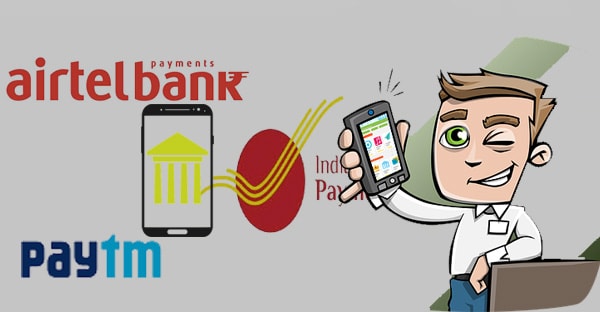Savings Bank is a traditional bank that was and is the primary location for your monthly saving to go. These banks are well known and have authority in financial services. The savings banks offer a lot of benefits when it comes to saving your hard earned money but a new system of banks is introduced by surveying the market and its needs and this system of banking is called Payments Banks. These banks are similar to traditional banks but have few limitations.

List of Payments Banks
The list of Banks RBI licensed in-principle to 11 entities-
- Aditya Birla Nuvo
- Airtel M Commerce Services
- Cholamandalam Distribution Services
- India Post Payments Banks (IPOS0000001)
- Fino Paytech
- National Securities Depository Ltd.
- Jio Payments Bank
- Vodafone M-Pesa
- Paytm
- Tech Mahindra
- Sun Pharmaceuticals
What is the Similarity?
There are few similarities when savings and payments banks are compared. The similarity of the traditional banks and payments bank is given below-
IFSC Code
Both the system of banks has their own IFSC Code issued by the RBI similar to the traditional bank. The money transaction is easily done through the IFSC Codes.
Interest Rate
The interest rate the payments bank offers is similar to the traditional bank i.e. 4% however, some payment banks offer 7.5% of interest rate which is very attractive for your savings.
What’s Difference?
The payment banks are not allowed to provide any loan or any debit/credit card to the account holder. However, a digital debit card can be provided to the account holder. The payment is initiated by wallet to wallet transaction or wallet to bank account transfer. The wallet to wallet transaction is done by either mobile number or it can be done by QR Code. On setting up the payments account the account holder will be issued a unique QR Code and this QR Code will be connected to the wallet and acts as a payment mode.
Why Payments bank?
Payments bank was conceptualized by the RBI in 2014. The main objective of the payments bank is to promote Digital means for payment as there are many benefits in the payment with this mode as there will be proper log which can be used to track for income tax. According to a World Bank report, India is home to 21% of the world’s unbanked adults. The objective of the payments bank is to serve these customers, especially those who are migrant workers with low income and this brings them in the formal financial system. The increasing needs and technological advancement demanded this kind of new system of banking which gave the Indian economy a new face. RBI first time in the history granted a banking authority to a non-banking financial sector.



